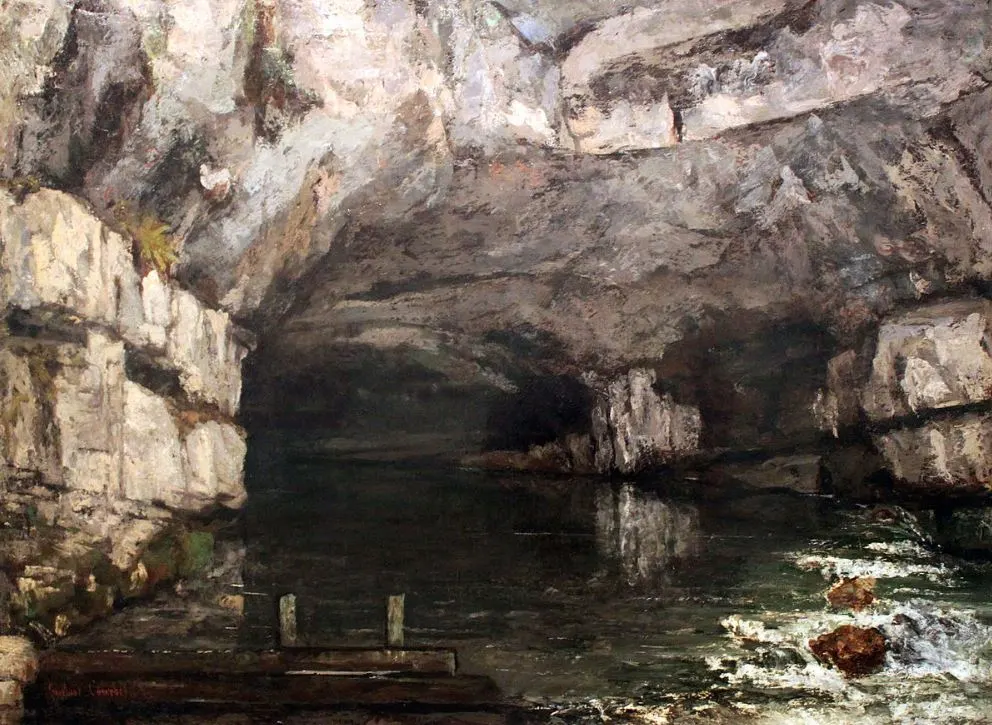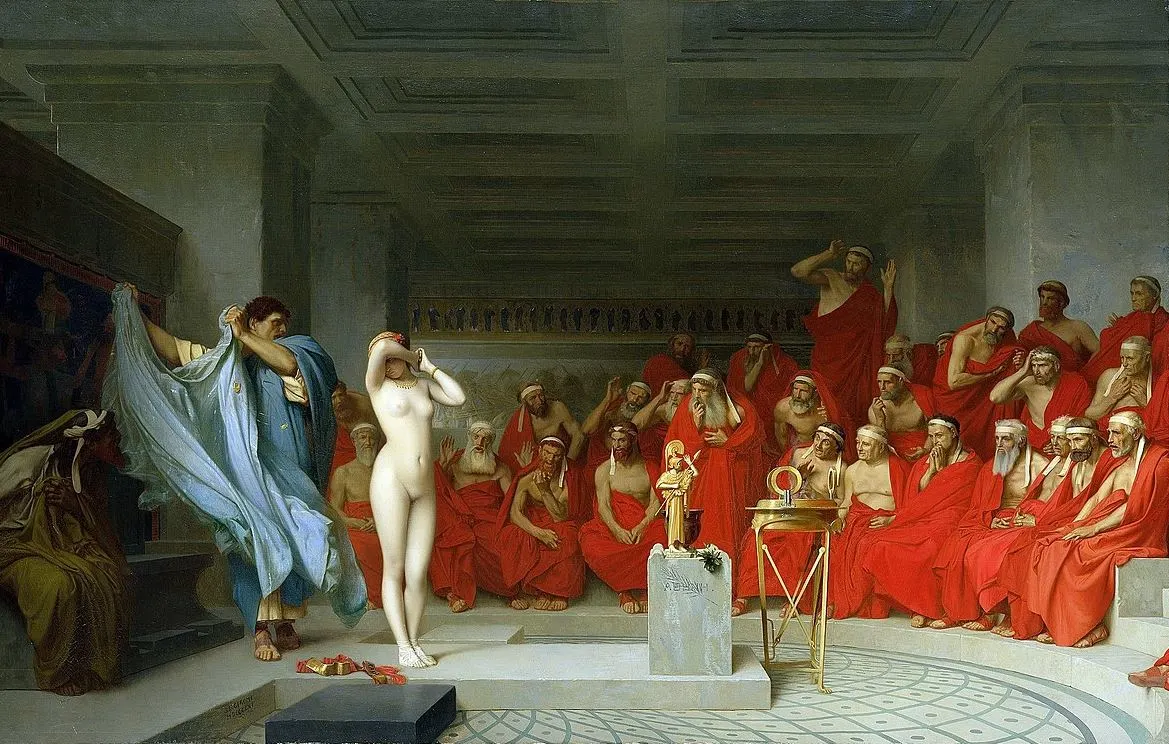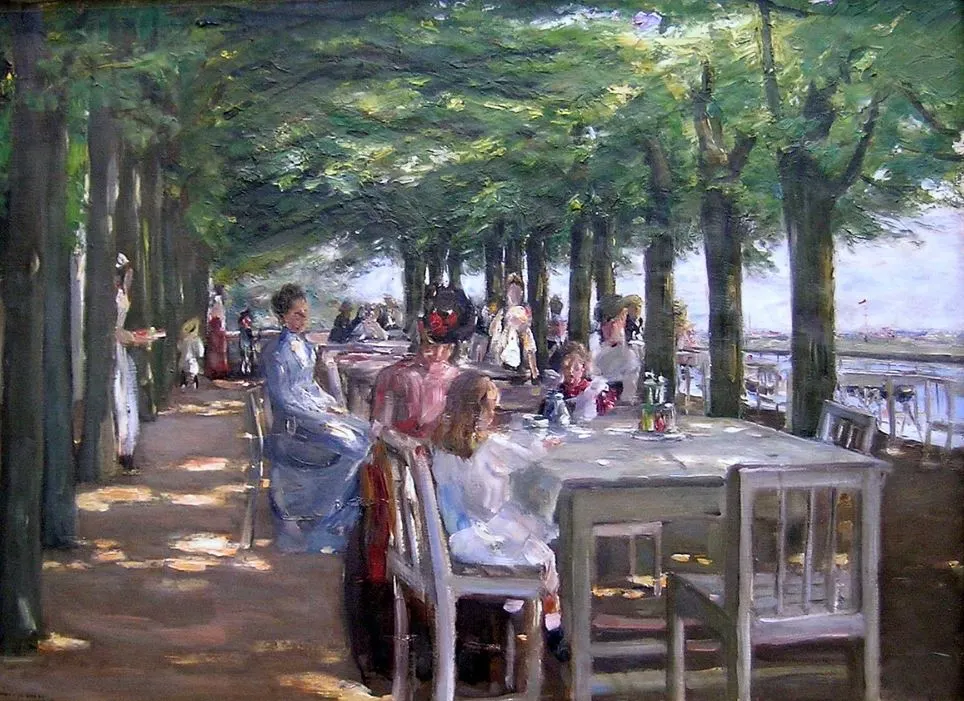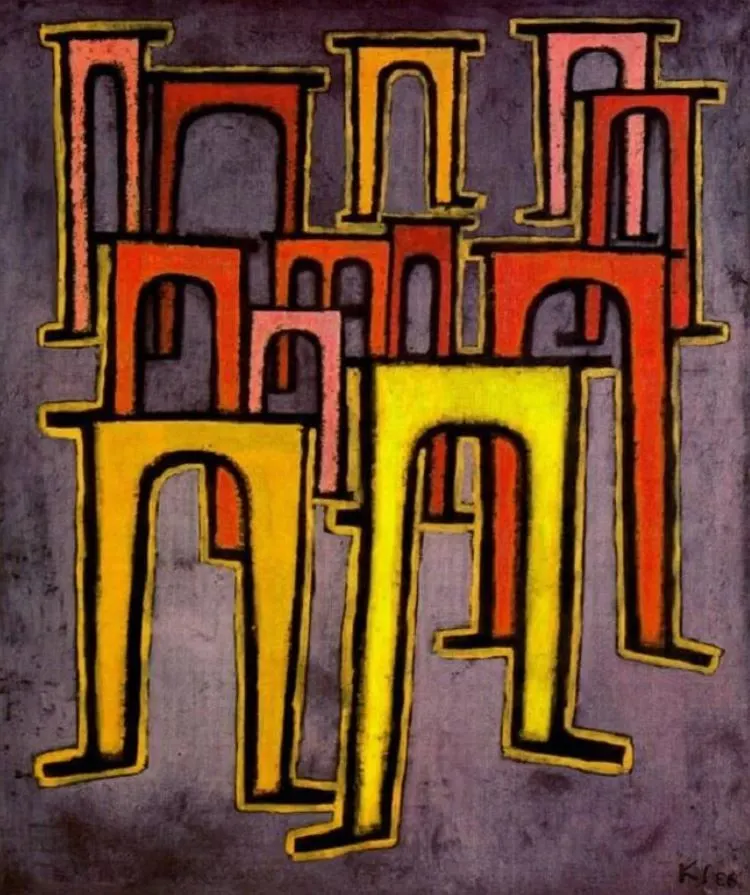One of the greatest museums in Germany is located in the Free and Hanseatic City of Hamburg, the second-largest city in the country.
The Hamburger Kunsthalle has a history that goes back to the year 1850 when it was founded as an “art hall.” That’s what its name still refers to today.
The main building for its growing collection of fine art was completed in 1869 and it was adjoined by two other buildings. The “Kuppelsaal” opened in 1921 and the “Galerie der Gegenwart” in 1997.
Today, the museum houses one of the most extensive collections of European art in the world, ranging from medieval art to artworks produced in modern times.
If you enjoy fine art from a wide variety of world-famous artists, then this art museum in Hamburg will surely be a great place for you to visit
In this article, you’ll discover some of the most famous paintings at the Hamburger Kunsthalle.
1. Wanderer above the Sea Fog – Caspar David Friedrich
- Date created: 1818
- Dimensions: 94.8 × 74.8 centimeters (37.3 × 29.4 inches)
Wanderer Above the Sea Fog is a painting by Caspar David Friedrich (1774-1840), a German artist and arguably one of the most talented painters the country ever produced. It depicts a scene in which a man stands with his back facing the viewer while overlooking a mountainous landscape.
Friedrich was one of the leading artists of the Romantic era and his oeuvre defines the movement. This work is considered to be one of the most famous Romantic paintings ever produced and is therefore one of the highlights at the Hamburger Kunsthalle.

2. The Source of the Loue – Gustave Courbet
- Date created: 1864
- Dimensions: 98 x 130 centimeters (38.5 x 51.1 inches)
The Source of the Loue is a painting by Gustave Courbet (1819-1877) which depicts the source of this river in Eastern France. This Realism painting depicts an area near Ornasn, the French artist’s hometown which often served as his inspiration.

What’s remarkable is that he completed 4 versions of this scene between 1863 and 1864. The painting at the Hamburger Kunsthalle is one of these while the others have been scattered all around the world. They can be found at the Walters Art Museum in Baltimore, at the Kunsthaus in Zürich, and at the MET in New York City.

3. Grabow Altarpiece – Master Bertram
- Date created: 1379-1383
- Dimensions: 266 x 726 centimeters (104.7 x 285.8 inches)
The Grabow Altarpiece is an enormous Gothic painting that was completed in the late 14th century. It was painted by a German Gothic artist known as Master Bertram (1345-1415), a man who painted in the International Gothic style.
It consists of several panels and is over 7 meters wide. What’s remarkable about this work is that it features the first known depiction of the Rest on the Flight into Egypt (bottom right corner), a Biblical story that refers to Mary, Joseph, and the infant Jesus Christ resting while they flee Egypt.

4. Nana – Édouard Manet
- Date created: 1877
- Dimensions: 154 × 115 centimeters (61 × 45 inches)
Nana is the title of a painting by Manet, a man who was pivotal in the development from Realism to Impressionism during the 1860s and 1870s. It depicts a woman who is applying make-up in what appears to be an upper-class boudoir in 19th-century France.
Édouard Manet (1832-1883) submitted this painting for the Paris Salon of 1877 but it was rejected. The artist subsequently decided to display it in the window of a shop at the Boulevard des Capucines, one of Paris’s Grand Boulevards. Needless today, it attracted a lot of eyeballs when it hung there.

5. The Sea of Ice – Caspar David Friedrich
- Date created: 1823-1824
- Dimensions: 96.7 × 126.9 centimeters (38 × 49.9 inches)
The Sea of Ice is another world-famous painting by Friedrich, the Romantic artist who originally titled this work the “Polar Sea.” That’s because it depicts a shipwreck in the Arctic sea caused by massive chunks of ice.
Friedrich painted this work in his studio near Dresden and had to use his imagination to paint it. That’s because he never visited the Arctic region in his lifetime. Regardless, the talented artist managed to produce a work of art that resembles the harsh conditions in the Polar region.

6. The Entry of Charles V into Antwerp – Hans Makart
- Date created: 1878
- Dimensions: 520 x 952 centimeters (204.7 x 374.8 inches)
The Entry of Charles V into Antwerp is the title of a monumental work of art by Hans Makart (1840-1884), one of the most renowned academic history painters of the 19th century. The Austrian artist developed a very unique style and was referred to as the “Magician of Colors.”
He often produced huge paintings depicting historical events and this is one of the most notable. His idea was to produce a “total work of art” with an abundance of figures and colors. Applying this theory, he transformed this work into a crowded scene centered around King Charles V on his horse.

7. Phryne before the Areopagus – Jean-Léon Gérôme
- Date created: 1861
- Dimensions: 80.5 × 128 centimeters (31.7 × 50 inches)
Phryne before the Areopagus is a painting by the French colleague of Makart named Jean-Léon Gérôme (1824-1904). He was one of the most prominent academic artists in France in the 19th century and focused on a wide range of subjects, including Classical, Oriental, and Mythological, to name just a few.
This work depicts an ancient Greek woman named Phryne who was put on trial because of her lack of respect for the Gods. Her defender, a man named Hypereides, came up with the brilliant idea to remove her robe which resulted in her acquittal. It was one of the main attractions at the Paris Salon of 1861 and is now at the Hamburger Kunsthalle.

8. Madonna – Edvard Munch
- Date created: 1895
- Dimensions: 90 x 71 centimeters (35.4 x 27.9 inches)
Madonna is the title of a series of remarkable Expressionist paintings by Edvard Munch (1863-1944), the most famous Norwegian artist in history. Several versions were completed between 1892 and 1895 and all of them feature a similar composition.
Munch’s paintings are always something special because they reflect the personal feelings of the artist. He was one of the first to do this and laid the foundation for Expressionist artists of future generations. Although this remains up for debate, this work might be Munch’s version of the Virgin Mary.

9. The Terrace at the Restaurant Jacob – Max Liebermann
- Date created: 1902
- Dimensions: 100 x 70 centimeters (39.37 x 27.55 inches)
The Terrace at the Restaurant Jacob is a painting by Max Liebermann (1847-1935), the most famous German Impressionist artist in history. His style very much resembles the works of the French Impressionists and that’s because he studied art in Paris.
The full name of the painting is “The Terrace at the Restaurant Jacob in Nienstedten on the Elbe” which reveals that this scene takes place in a quarter of the metropolitan area of Hamburg. Nienstedten is located on the right bank of the Elbe River.

10. Revolution of the Viaduct – Paul Klee
- Date created: 1937
- Dimensions: 60 x 50 centimeters (23.6 x 19.6 inches)
Revolution of the Viaduct is the title of a painting by Paul Klee (1879-1940), a Swiss artist and art theoretician who taught at the Bauhaus School of art in Munich. Klee was an individualistic artist who loved experimenting with different styles.
This work depicts arches that appear to be escaping from the viaducts they belong to. It was completed shortly before World War II broke out at a time when Fascism was gaining ground across Europe. The rebellious arches are therefore symbols of anti-Fascism.

